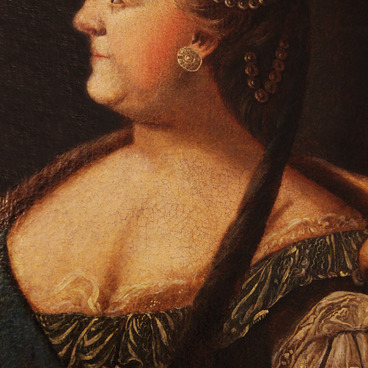Metropolitan Platon was the key figure of the Russian Orthodox Church of the second half of the 18th century. Pyotr Levshin was born in 1737 into the family of a clergyman and received good education: first he graduated from the Kolomna Orthodox Theological Seminary and later – from the Academia Slavo-Graeco-Latina. Levshin had a perfect command of Latin, Greek and French and on his own learned a lot of other disciplines. Very soon he became a prominent preacher, began to teach rhetoric at the Trinity Seminary and was later appointed its rector.
Platon became a monk in the Holy Trinity St.Sergius Lavra. When the church was visited by Catherine the Great in 1763, Platon’s Sermon about Godliness greatly impressed the Empress. She appointed him the preacher of her Court and the mentor of Tsesarevich Pavel Petrovich, future Emperor Pavel I.
In 1766, Platon became the Father Superior of the Holy Trinity St.Sergius Lavra and a member of the Most Holy Synod. Four years later, when the Tsesarevich got married and Platon’s duties of a catechist were over, he became the Archbishop of Tver. In 1775, Platon became the Metropolitan of Moscow, where he continued for almost 40 years. His diocese also included Kaluga.
Metropolitan Platon wrote a lot of works, including the well-known Brief History of the Russian Church. It became the first systematic treatise in the Church History in Russia.
One of his main achievements was the elimination of ‘cross-roads’ clergymen. That was the name for priests without parishes, who literally offered their services to those willing at the intersections of roads. Among them there were a lot of uneducated people, who were not entitled to perform religious rites, and mere swindlers, as well.
When he became an elderly person and his health got weaker, he handed over the reins to Bishop Augustine. According to their contemporaries, Augustine treated Platon with ‘filial piety’ and discussed every important matter with him although he was entitled to make decisions without his blessing.
In 1811, shortly before his death, Platon blessed the revival of the almost dilapidated Monastery of Optina – a monastery for men in the vicinity of Kozelsk. At the turn of the 20th century this monastery became one of the largest spiritual centres of Russia and was visited by a lot of famous people, including Fyodor Dostoevsky.
Metropolitan Platon barely survived the news about the invasion of Russia by the Napoleonic army, but still managed to live to learn about the retreat of the French army. He died on 11 November 1812 in the Spaso-Vifansky Monastery, which he himself had established.
Platon became a monk in the Holy Trinity St.Sergius Lavra. When the church was visited by Catherine the Great in 1763, Platon’s Sermon about Godliness greatly impressed the Empress. She appointed him the preacher of her Court and the mentor of Tsesarevich Pavel Petrovich, future Emperor Pavel I.
In 1766, Platon became the Father Superior of the Holy Trinity St.Sergius Lavra and a member of the Most Holy Synod. Four years later, when the Tsesarevich got married and Platon’s duties of a catechist were over, he became the Archbishop of Tver. In 1775, Platon became the Metropolitan of Moscow, where he continued for almost 40 years. His diocese also included Kaluga.
Metropolitan Platon wrote a lot of works, including the well-known Brief History of the Russian Church. It became the first systematic treatise in the Church History in Russia.
One of his main achievements was the elimination of ‘cross-roads’ clergymen. That was the name for priests without parishes, who literally offered their services to those willing at the intersections of roads. Among them there were a lot of uneducated people, who were not entitled to perform religious rites, and mere swindlers, as well.
When he became an elderly person and his health got weaker, he handed over the reins to Bishop Augustine. According to their contemporaries, Augustine treated Platon with ‘filial piety’ and discussed every important matter with him although he was entitled to make decisions without his blessing.
In 1811, shortly before his death, Platon blessed the revival of the almost dilapidated Monastery of Optina – a monastery for men in the vicinity of Kozelsk. At the turn of the 20th century this monastery became one of the largest spiritual centres of Russia and was visited by a lot of famous people, including Fyodor Dostoevsky.
Metropolitan Platon barely survived the news about the invasion of Russia by the Napoleonic army, but still managed to live to learn about the retreat of the French army. He died on 11 November 1812 in the Spaso-Vifansky Monastery, which he himself had established.



